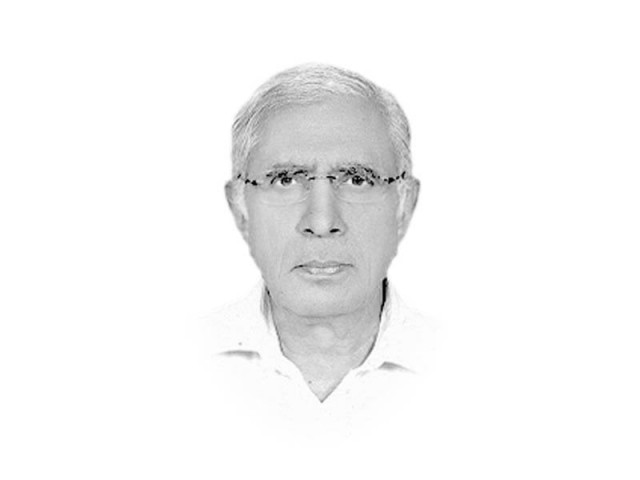What is Pakistan’s future?
The author treats the emergence of Bangladesh on the ruins of East Pakistan rather perfunctorily

The writer served as executive editor of The Express Tribune from 2009 to 2014
One such book that I had the good fortune of getting my hands on purely by chance was a 288-page short history leading to the creation of Pakistan and its chaotic journey to today’s uncertain times. Published by Royal Book Company, Karachi, Pakistan Under Siege tellingly poses the question that is agitating the minds of all intellectual Pakistanis today: What is Pakistan’s future?
The author of the book Masood H Kizilbash, a retired civil servant who had held key positions in the federal government in the fields of public finance, planning, local governance and social and human development, attempts to answer the question in his own inimitable and highly readable style. He delves into political and economic events of over 150 years, a time frame between May 1857 and the present day. He draws some independent conclusions from the empirical research different from other authors on the subject. He links Pakistan’s present predicaments to these conclusions.
Striking a path that perhaps only a few have so far treaded, if at all, Mr Kizilbash argues that independence of India and its division into two states — India and Pakistan on 14th and 15th August 1947 owed largely to rival interests of ascending (the US) and descending (the UK) world powers following the WWII and only little to indigenous struggle for independence. The author further argues that despite forecasts of Pakistan’s early demise it became a viable and functional state within a few years of its existence on account of what he calls “dedication, honesty and hard work of its early leadership — Jinnah and Liaquat.” Thereafter, he says, the country lost its moorings under subsequent leaders leading to the current existential crisis.
Mr Kizilbash is of the view that the course of the events in Pakistan was largely determined by the international powers. And he predicts that with its weak status continuing and the continued absence of strong leadership, international actors will continue to buffet Pakistan’s destiny and keep its ranking among the international community at the bottom rung perpetually trapped in socioeconomic and political chaos, unless the nation as a whole stands up on its two feet on its own without the assistance of dubious foreign crutches which come with strings attached.
The author treats the emergence of Bangladesh on the ruins of East Pakistan rather perfunctorily. One thought an in-depth analysis of the 1971 crisis that resulted in East Pakistan going its separate way would have accorded the author’s projections for Pakistan’s future and the needed eloquence.
However, his conclusion provides one with the actual realities on ground: “The ongoing scenario is ingrained in the history of Pakistan when discarding the independent foreign policy, the leadership in Pakistan aligned itself with the US by signing the Defence Treaty in 1954. Thereafter, Pakistan never came out of the spell of friendship with the US who was at times at its peak and at other at its lowest ebb. This ebb and flow in relationship was determined by the Americans in accordance with their national interests in the changing international chess game of power politics. Since the rise of China as an emerging world power, their attention became focused on raising South Asia as a balancing power to China.
“By choosing to align itself with China and opening up its territory for the establishment of an economic corridor stretching to Gwadar port at the mouth of the Gulf is a threat to the American interests and exposes Pakistan to serious consequences. However, Pakistan at present being in the throes of poverty is a disunited and factionalised country and is afflicted with all pervading extremism and terrorism. With centrifugal forces operating in full swing within, and regional and international players at work to promote their national agendas in the region, there is serious skepticism that Pakistan can assert its national interest. This is only possible if national unity is forged under a strong leadership.”
Published in The Express Tribune, August 5th, 2017.
Like Opinion & Editorial on Facebook, follow @ETOpEd on Twitter to receive all updates on all our daily pieces.
















COMMENTS
Comments are moderated and generally will be posted if they are on-topic and not abusive.
For more information, please see our Comments FAQ